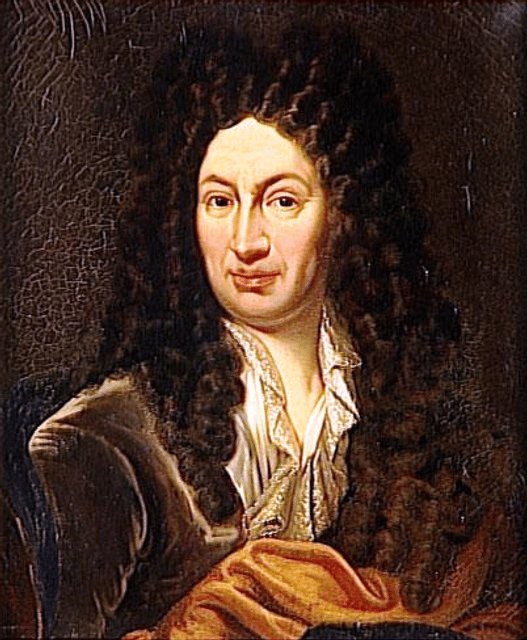Académie des Inscriptions et Belles-Lettres

Académie des Inscriptions et Belles-Lettres

The Académie des Inscriptions et Belles-Lettres (French pronunciation: [akademi dez‿ɛ̃skʁipsjɔ̃ e bɛl lɛtʁ]) is a French learned society devoted to the humanities, founded in February 1663 as one of the five academies of the Institut de France.
History

Institut de France in Paris, the seat of the Académie des Inscriptions et Belles-Lettres
The Académie originated in 1663 as a council of four humanists, "scholars who were the most versed in the knowledge of history and antiquity": Jean Chapelain, François Charpentier, Jacques Cassagne, Amable de Bourzeys, and Charles Perrault.[1] In another source, Perrault is not mentioned, and other original members are named as François Charpentier and a M. Douvrier.[2] The organizer was King Louis XIV's finance minister Jean-Baptiste Colbert. Its first name was the Académie royale des Inscriptions et Médailles, and its mission was to compose or obtain Latin inscriptions to be written on public monuments and medals issued to celebrate the events of Louis' reign. However, under Colbert's management, the Académie performed many additional roles, such as determining the art that would decorate the Palace of Versailles.[3]
In 1683 Minister Louvois increased the membership to eight.[2] In 1701 its membership was expanded to 40 and reorganized under the leadership of Chancellor Pontchartrain. It met twice a week at the Louvre, its members began to receive significant pensions, and was made an official state institution on the king's decree.[4] In January 1716 it was permanently renamed to the Académie royale des Inscriptions et Belles-Lettres with the broader goal of elevating the prestige of the French monarchy using physical symbols uncovered or recovered through the methods of classical erudition.
The Académie produced a catalogue of medals created in honor of Louis XIV, Médailles sur les événements du règne de Louis le Grand, avec des explications historiques, first published in 1702. A second edition was published in 1723, eight years after Louis' death. Each page of the catalogue featured engraved images of the obverse and reverse of a single medal, followed by a lengthy description of the event upon which it was based.[5] The second edition added some medals for events prior to 1700 which were not included in the first volume, and in some cases the images of medals in the earlier edition were altered, resulting in an improved version. The catalogues may therefore be seen as an artistic effort to enhance the king's image, rather than as an accurate historical record.[6]
Role
In the words of the Académie's charter, it is:
primarily concerned with the study of the monuments, the documents, the languages, and the cultures of the civilizations of antiquity, the Middle Ages, and the classical period, as well as those of non-European civilizations.
Today the academy is composed of fifty-five French members, forty associate foreign members, fifty French corresponding members, and fifty foreign corresponding members. The seats are distributed evenly among "orientalists" (scholars of Asia and the Islamic world, from ancient times), "antiquists" (scholars of Greece, Rome, and Gaul, including archaeologists, numismatists, philologists and historians), "medievalists", and a fourth miscellaneous group of linguists, law historians, historians of religion, historians of thought, and prehistorians.[4]
The Volney Prize is awarded by the Institut de France, based on the proposal of the Académie. It publishes Mémoires.
Prizes, grants and medals awarded by the Académie
Prizes[7]
Prix Ambatielos
Prix d'histoire des religions de la fondation "Les Amis de Pierre-Antoine Bernheim"
Prix des antiquités de la France
Prix Emile Benveniste
Prix Bordin
Prix du budget
Prix Honoré Chavée
Prix Croiset
Prix Duchalais
Prix Paule Dumesnil
Prix Roman et Tania Ghirshman
Prix Gobert
Prix Hirayama
Prix de la Grange
Prix Serge Lancel
Prix Raymond et Simone Lantier
Prix Marie-Françoise et Jean Leclant
Prix Gaston Maspero
Prix Jean-Charles Perrot
Prix George Perrot
Prix Jeanine et Roland Plottel
Prix Saintour
Prix Emile Senart
Prix Léon Vandermeesch
Prix de l'Institut de France 2018
Prix de la Fondation Colette Caillat
Grand Prix d'archéologie de la Fondation Simone et Cino del Duca
Prix Jean_Edouard Goby
Prix Hugot
Grants
Subvention Louis de Clercq
Bourse Courtois
Subvention de la Fondation Dourlans
Subvention Garnier-Lestamy
Subvention Max Serres de la Fondation Eve Delacroix
Bourse Jacques Vandier
Medals
Médailles des Antiquités de la France
Médaille Jean-Jacques Berger
Médaille Clermont-Ganneau
Médaille du Baron de Courcel
Médaille Delalande-Guérineau
Médaille Drouin
Médaille Alfred Dutens
Médaille Fould
Médaille Gobert
Médaille Stanislas Julien
Médaille le Fèvre-Deumier
Médaille Gustave Mendel
Médaille Gabriel-Auguste Prost
Prominent members
- *For a list of the Academy's members past and present, seeCategory:Members of the Académie des Inscriptions et Belles-Lettres
Eugène Albertini
Antoine Anselme
Jean Sylvain Bailly
Anatole Jean-Baptiste Antoine de Barthélemy
Charles Batteux
Pierre Louis Jean Casimir de Blacas
Michel Bréal
Antoine Leonard de Chézy
Charles Simon Clermont-Ganneau
Jean-Baptiste Colbert
Henri Cordier
André Dacier
Jean Denis, comte Lanjuinais
Gabriel Devéria
Louis Duchesne
Émile Egger
Jean-Baptiste Benoît Eyriès
André Félibien
Jean François Boissonade de Fontarabie
Nicolas Fréret
Bernard le Bovier de Fontenelle
Étienne Fourmont
Antoine Galland
Ernst Hoepffner
Pierre Amédée Jaubert
Stanislas Julien
Alexandre Maurice Blanc de Lanautte, Comte d'Hauterive
Pierre Henri Larcher
Jean Lebeuf
Edmond Le Blant
Charles-François Lebrun, duc de Plaisance
Jean Leclant
Émile Littré
Jean Mabillon
Louis Ferdinand Alfred Maury
Joachim Menant
Franz Miklosich
Agénor Azéma de Montgravier
Jean Marie Pardessus
Alexis Paulin Paris
Claude-Emmanuel de Pastoret
Armand-Pierre Caussin de Perceval
Charles Perrault
Francois Pouqueville
Louis Racine
Charles-Frédéric Reinhard
Jacques Nicolas Augustin Thierry
Jacques de Tourreil
Anne Robert Jacques Turgot, Baron de Laune
Joseph Vendryes
William Henry Waddington
Charles Athanase Walckenaer
Henri-Alexandre Wallon
See also
French art salons and academies